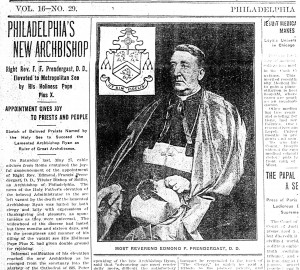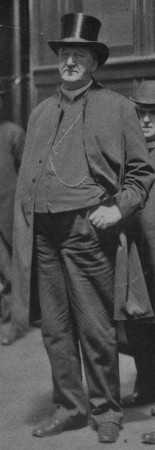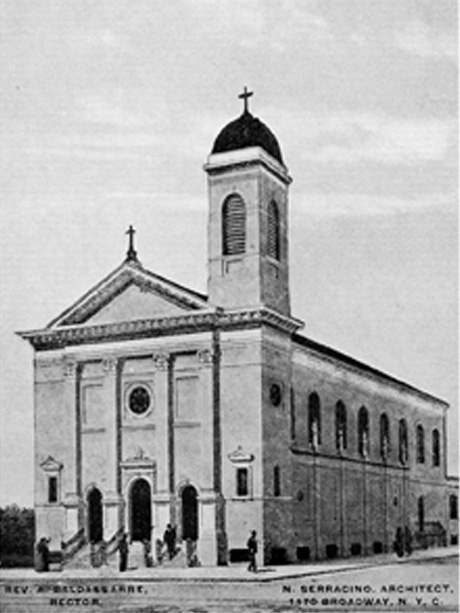It was recently announced that Charles J. Chaput, O.F.M. Cap., former Archbishop of Denver, will replace Cardinal Justin Rigali as Archbishop of Philadelphia. The announcement and subsequent installation of Chaput as the ninth Archbishop of Philadelphia comes around the same time as the 100th anniversary of the installation of Philadelphia’s third Archbishop, Edmond F. Prendergast (1911-1918).
Prendergast studied, was ordained, and served in the in the Philadelphia Archdiocese for almost a half-century by the time Pope Pius X appointed him Archbishop Patrick J. Ryan’s replacement in May 1911. He was installed as Archbishop July 26, 1911. Prendergast was the first graduate of St. Charles Borromeo Seminary to become bishop of Philadelphia.
Edmond F. Prendergast was born in Clonmel, County Tipperary in 1843 into a family with numerous members who had chosen the priesthood or religious life. Accepting an invitation from one of his uncles to come to the United States in 1859, Prendergast enrolled at St. Charles Borromeo Seminary in Overbrook, PA. He was ordained to the priesthood by Bishop James Frederick Wood on November 17, 1865.
Prendergast immediately became extremely active within the diocese. He served as assistant pastor and pastor of several parishes in the diocese, including St. Paul's Church in Philadelphia and St. Mark's Church in Bristol. His last appointment as pastor was St. Malachy's Church in Philadelphia where he served for 15 years. Prendergast was also a member of the Diocesan School Board and Building Committee, was on the Board of Trustees of the Clerical Fund, among other activities, and directed the Catholic Total Abstinence Society and St. Vincent de Paul Society, among other activities.
In addition to his duties at St. Malachy's, he was named vicar general of the Archdiocese of Philadelphia in 1895; and in 1897, was appointed Auxiliary Bishop of Philadelphia and Titular Bishop of Scilium.
The transition in leadership from Ryan to Prendergast seemed to have been fairly seamless, with Prendergast following a course similar to the one his predecessor had set with the goal of catering to the rapidly growing Catholic population and expanding diocese. Multiple parishes and parish schools were erected, especially ethnic parishes for the increasing number of southern Italian and Eastern European immigrants. Three Italian parishes in the city alone, including St. Nicholas of Tolentine, Our Lady of Pompeii, and Our Lady of Consolation, were established during Prendergast’s brief tenure.
Several Catholic institutions devoted to education and social services, some of which Archbishop Ryan had initiated, were completed and erected under Prendergast, including Catholic Girls’ High School, West Philadelphia Catholic High School for Boys, the Archbishop Ryan Memorial Institute for the Deaf, and the Don Bosco Institute in South Philadelphia .
Prendergast’s health began to fail only a couple of years after his appointment. He died at the episcopal residence, 1723 Race St., on February 26, 1918.
Reference:
Connelly, James F. The History of the Archdiocese of Philadelphia. Archdiocese of Philadelphia, 1976.




